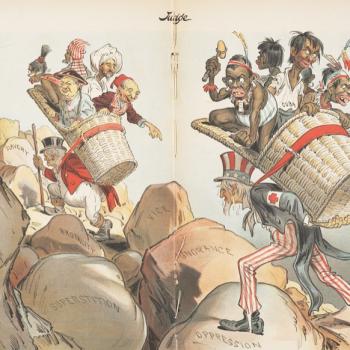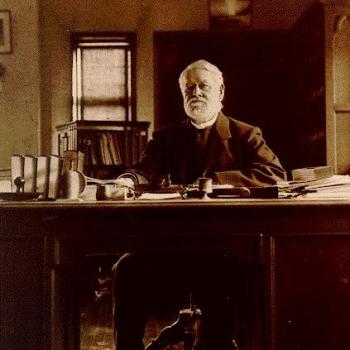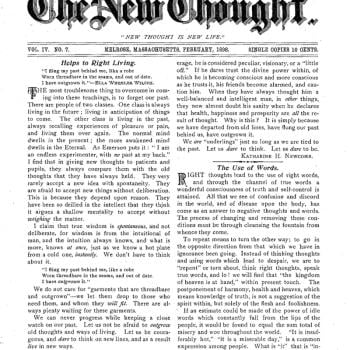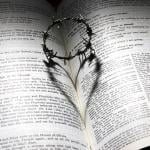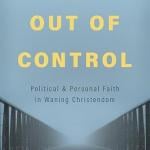I’ve noted recently how thin the lines between canonical and non-canonical scriptures were in many churches through history, and especially the millennium or so of the Middle Ages. But beyond raising an interesting point about different attitudes prevailing in the past, what does that tell us about Christian history more generally? Why does it matter? I think there are several reasons.
1.If you want to understand the history of Christian thought, in the sense of what a substantial majority of Christians actually thought and believed through much of the history of the faith, then you cannot ignore these many alternative scriptures, texts like the Gospel of Nicodemus and pseudo-Matthew, the infancy gospels and the Book of Enoch. They really were that influential. Nor was their impact confined to the poor and uneducated.
2.I press the definition of “canon.” For over a thousand years, Christian churches treated certain texts as authoritative, although they were never listed or approved as parts of the Biblical canon. They read these texts in church, they used them in liturgy, they used them as the basis for the artwork that adorned Christian buildings. Look for instance at Els Rose’s important book Ritual Memory: The Apocryphal Acts and Liturgical Commemoration in the Early Medieval West (c. 500–1215) (Brill, 2009). As she shows, “Various liturgical narratives of the Latin Middle Ages make abundantly clear that extra-biblical traditions were widely received in the liturgical cult of biblical saints. In the light of the medieval evidence, the opposition apocrypha–liturgy seems to be a false one. Liturgy might even be considered an important intermediary of the apocryphal traditions and may, in particular cases, be regarded as a crucial instrument in the development and ‘canonization’ of apocryphal traditions.” In practice, what difference would it have made if some council had gathered to proclaim these texts canonical? De facto, they already were canonical, and liturgy reinforced that role.
3.The issue tells us much about how history is written. Historians naturally focus on documents that survive, and when records are rare, they give disproportionate weight to the ones that happen to have been preserved. When we look at debates over the church’s canon, for instance, we hear a great deal about a few documents and councils, as if they settled the matter once and for all, always and everywhere. In practice, the global church was very diverse, and different rules operated at different times and places. Theory and practice diverged, often widely. The mere fact that any given document survives says nothing whatever about its importance or influence. To say, for instance, that the Muratorian Fragment declares that book X is acceptable or not need not have decided the issue outside one particular community – or indeed, in that community.
Please understand, that is not a dig at the thoughtful and nuanced work of the fine scholars working on the history of canon. I think for instance of the wealth of acute scholarship in a collection like The Canon Debate, edited by Lee Martin McDonald and James A. Sanders (2001). Rather, I am complaining about how those issues circulate in popular consciousness.
4.It is very difficult indeed to reach beyond modern (Post-Reformation) attitudes to scripture and canon to reconstruct the world of early or medieval Christianity. Deciding that the Bible definitely contains these books and no others is simple enough when you assume the normality of printing, which gives definite form to a canon. It takes imagination to think of a manuscript-based world with much more fluid boundaries.
5.Before modern times, institutions often claimed more real power than they actually possess. Church authorities, for instance, might declare that a particular book should or should not be read, but that did not necessarily have much impact on the ground. Historians, though, can easily find the institutional statement on a particular issue, but examining implementation is hard. If the medieval church spent several centuries trying to enforce celibacy on its clergy, what makes us think that official bans on some alternative scripture could simply be enforced overnight?
6.We so often draw a false contrast between early and medieval Christianity, imagining that the early church was marked by intense and lively debate, while the Middle Ages were dominated by a stultifying church orthodoxy. (Again, I am not referring there to what serious scholars believe, but to commonplace stereotypes). In fact, the end of antiquity was not marked by a sudden and rigid consensus over the contents and limits of scripture. Debate continued, and the de facto canon was fluid.
7.If I ever understood the difference between apocrypha, hagiography, pseudepigrapha and the rest, I don’t any more. What for instance do we do with something like the Protevangelium, about the birth and childhood of the Virgin Mary? Is that hagiography, a pseudo-gospel, or what?
But to return to my basic theme. These texts matter enormously, and thoroughly repay our study.



